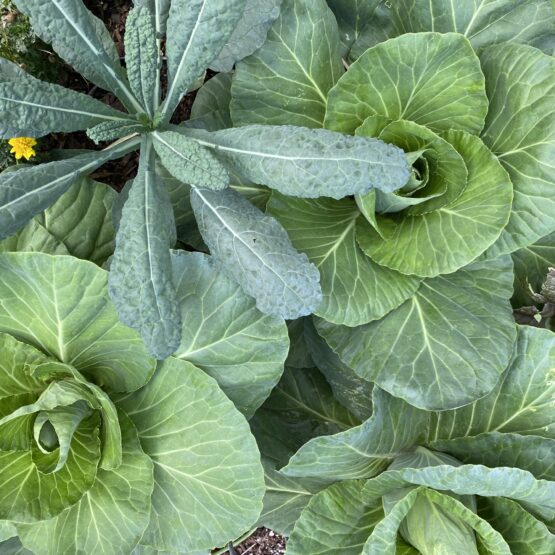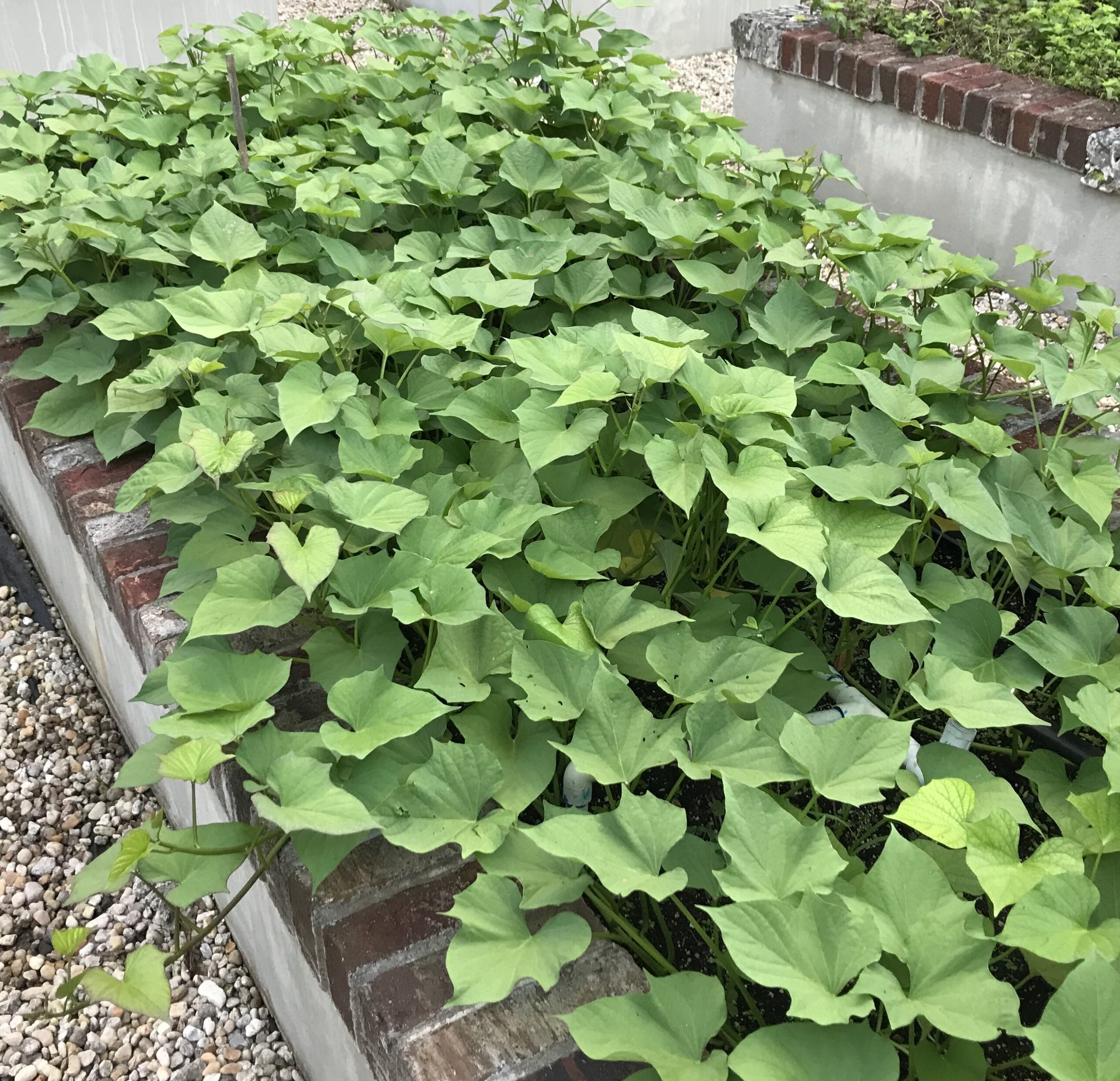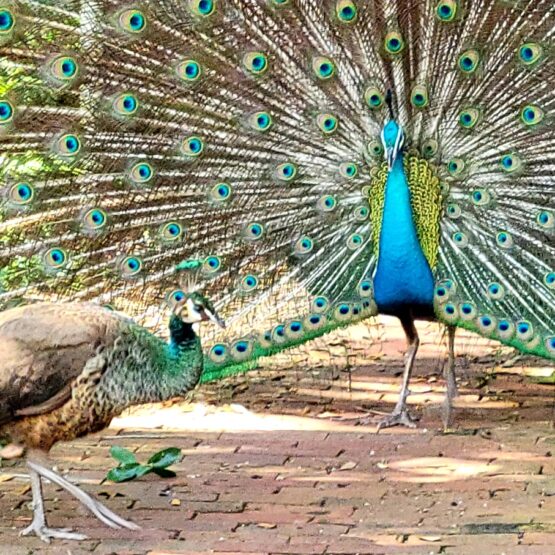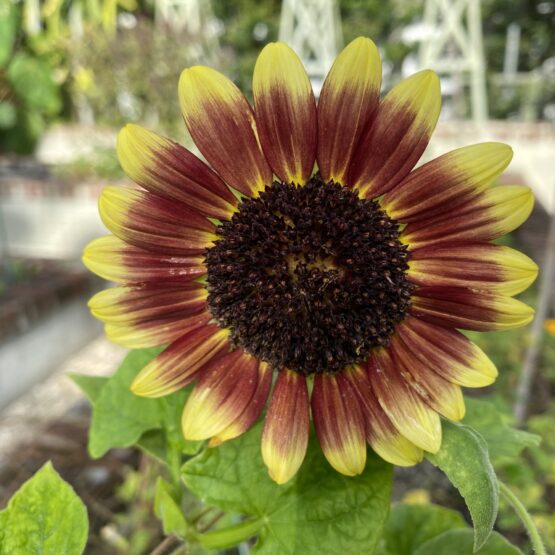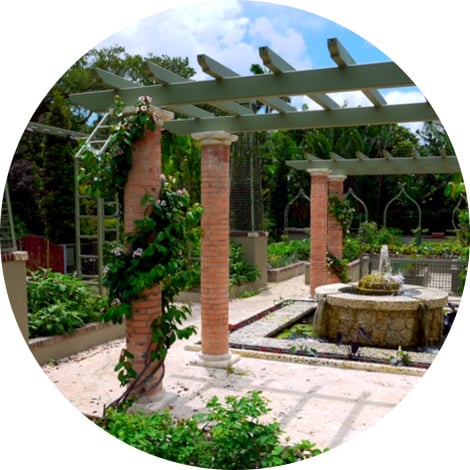Not exactly an exciting or pretty picture right? But it’s just perfect, because this is how much of our garden looks as we prepare the soil for the coming season. It is a serious endeavor, as we have learned from experience that a successful garden is more dependent than anything upon having really good soil. Not only does it support the growth of our plants, but determines their nutritional value as well. And, good soil is a pest deterrent, because poor soil produces weak plants that are more vulnerable to pests and actually attract them. Also, the beneficial microbes in good soil help to prevent plant disease.
Fall is our “spring” when it comes to planting here in South Florida. Our growing season starts in the fall and runs through the spring, which is the opposite of most regions in the U.S. For the first few years that we had this garden, we had wonderfully rich organic soil that we were able to obtain at a steep discount. To “prepare the soil” meant opening the bags and dumping them in the beds, and voila! – our plants would thrive! But when we lost our source, we had to learn how to create the best soil environment for our plantings on our own. It has been a process – one that we improve upon each year, and continue to learn from.
There are many steps we take to prepare the soil for planting our new crops each year.
I. Before the fall season:
- A truckload of finely ground tree mulch is ordered at least six months in advance so that it can break down into composted soil in time for fall planting.
- Seeds are planted for our cover crops in many of the beds (see post: Summer Cover Crops) in late spring/early summer, after completing our harvest. As the plants mature (in a few months), we cut them down and turn them into the soil for decomposition.
- We get as much of our own homemade kitchen-scrap compost going as possible, in bins at our community garden and at home (see post: Compost It!).
II. Preparing the soil in the beds:
- Summer crops have been turned under and allowed to decompose thoroughly.
- Beds are weeded. If necessary, depending on how rocky the soil is, the bed may be sifted using our handmade wooden frame with screening inserted. This is a labor intensive process but well worth it to create a refined soil.
- Then the composted soil (which has completely broken down) is added to the bed, along with a substantial amount of peat. The beds are then dug deeply and the new ingredients are thoroughly incorporated. The soil is then allowed to “rest” for at least a week before planting, during which the peat can begin to lower the pH level.
- At the time of planting, if deemed necessary, a thin layer of our prepared, rich kitchen-scrap compost is added to the top of the soil and only slightly worked in. In addition, this compost or worm castings may be placed in the hole for transplants when placed in the beds, or later “fed” to growing plants around their base.
- NOTE: The reason for weeding and allowing thorough decomposition of the above elements is so that the soil is not expending energy to decompose them when new seeds/seedlings are put in. This can severely inhibit plant growth, as we’ve seen firsthand!
III. Other Organic Amendments to the Soil (before or during planting)
- Azomite is a powdery substance that is added to the soil before planting (a prescribed amount per square foot), and is worked into the top six inches. It is composed of trace minerals from ancient mineral deposits, and it adds to the growth and nutrition of the plants.
- Greensand is derived from the ocean floor and is also a powdery substance. It supplies several elements, including potash, magnesium, iron, silica, etc. as well as many trace minerals to the soil, helping to improve root growth, water retention levels in the soil, and plant health in general.
- Worm castings are an excellent organic source of nitrogen and minerals. They are expensive and a very potent, nutritional source, so they are used judiciously:
- They comprise 10% of the soil mix used to start our seedlings in flats.
- They are added in or around the soil where seedlings are transplanted into the beds.
- They are directly applied as a fertilizer when plants need a boost during the growing season.
- Sulfur in the form specifically produced for gardens has been added to the soil this year in an attempt to lower our pH/increase acidity. South Florida soils are typically high in pH which is not conducive to growing certain types of vegetables. The sulfur is mixed into the soil which then must rest for at least 30 days before planting. Sulfur should be applied to the soil annually.
So obviously, fall is a very important and labor intensive time for us as our major planting season begins. Soil is considered the most important ingredient for a thriving, organic garden and we take its preparation seriously. The more we do so, the better it pays off!
